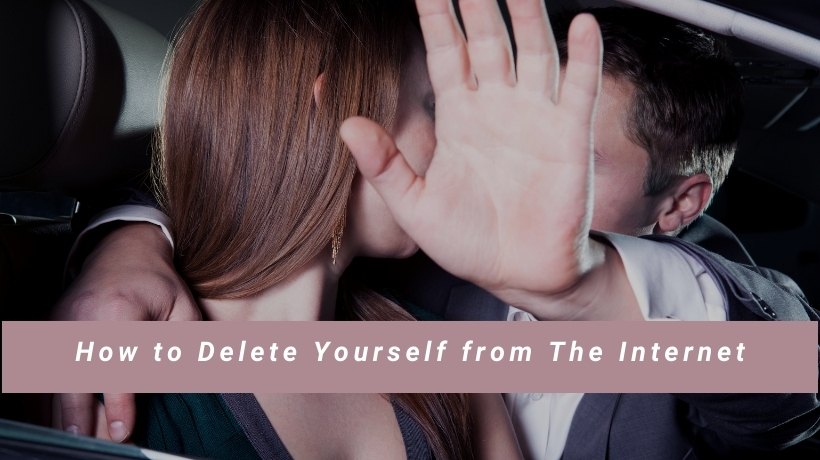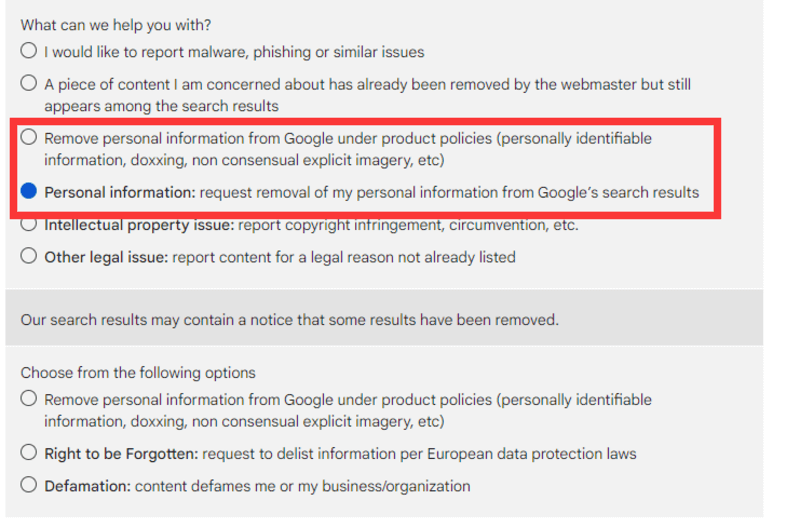How to Delete Yourself from The Internet On Different Platforms
Online privacy is a hot topic these days, especially with giant data breaches exposing millions of individuals’ personal information. Then, you may want to delete yourself from the internet to protect your privacy.
Deleting sensitive information from the internet lowers the chances of the wrong person using it for malicious purposes. To streamline your data privacy, follow these tips on how to delete your personal information from the internet. You’ll reduce your risk of being hacked – and get some privacy back!

Contents
Can You Delete Yourself from The Internet?
To be honest, it’s nearly impossible to delete yourself from the web totally, but you can reduce the amount of personal data about you on the internet.
We create so many profiles on countless websites, and many of them we even forget about as time passes. It’s not only Facebook, Netflix, Amazon, Twitter, Instagram… oh no! It makes it nearly impossible to delete ourselves from internet completely – we even forgot where we have set profiles online!
However, it is still possible to erase most of your personal information footprint from the internet if you know where to start.
Here’s how you can do it.
How to Delete Yourself from the Internet
Your social media presence has the largest impact on your online footprint, so you should start here.\
To remove yourself from social media, it is important to delete your accounts, not just log out or stop using them.
Visit every social media site you’ve used — Facebook, LinkedIn, Twitter, Reddit, and so on, and close your account. Virtually all social media platforms have a formal process for closing your account.
Cannot live without social media networks and unwilling to close your account? Here’re some tips to help you protect your privacy on social media:
- Read and Understand the Privacy Terms – Before signing into any social media and registering an account, it is important that you read and understand their privacy terms.
- Adjust your Privacy Settings – For every social media platform you are using, always check the default privacy settings on their site.
- Turn Off Your Location – While adjusting your privacy settings, never forget to turn off your gadget’s location sharing.
- Biographical Information – To register an account with many social media platforms, you’ll be required to provide your biographical information such as full name, year of birth, age, or address. Keep these pieces of information to yourself to limit what other social media users know about you.
- Account Information – Never provide sensitive information such as nearest schools, political affiliation, bank account information, former or current workplace, Social Security numbers, or general interests, among others.
2. Remove Personal Info from Websites to Google
If someone’s posted sensitive information of yours on the internet and the webmaster of the site where it was posted won’t remove it, you can send a legal removal request to Google to have it removed.
Certain personal information will be removed by Google, including credit card information, bank account numbers, images of signatures, explicit images that were shared without your permission and confidential medical records.
They will also remove any national identification numbers such as social security numbers, passport numbers and tax identifiers.
They will not, however, remove things such as telephone numbers, addresses and your date of birth. This is usually a matter of public record.

3. Clean Up Your Browser
Your browser also contains tons of data on your search history, as well as cached files, and passwords. While your browser loves making lists, ‘history sniffers’ love reading them. These include tracking companies looking at your online activity to target you with adjusted ads and messages, but also cyber-criminals customizing their online attacks to make you more likely to fall for them.
You should clean your browser regularly. Clearing your cookies, cache and web history after every session may be overkill for most of us, but you can get into good browser hygiene habits by doing it every two weeks or so.
4. Pay Attention to File Sharing Sites
You may also want to consider connections to file sharing sites, such as Dropbox and Google Drive, as well as any cloud photo apps. File-sharing risks include:
- Risk of viruses or malware – Downloading a file through a P2P network is generally riskier than downloading it from a website. This is because some files on P2P networks could carry viruses or other malware
- Placing personal information at risk – When sharing files, you are giving other people access to the files on your computer. Although most people try to share only specific folders, it is possible to share your computer’s entire contents accidentally.
- Inadvertently providing access to unknown users – You might assume that it’s safe to share personal data via online file-sharing because you are sending it directly to known users. But it isn’t possible to verify the user on file-sharing applications, which means that the person on the other end may not be who you think they are.
- Open ports on your firewall – Firewalls are designed to encrypt communications going into and out of your computer so attackers can’t see what you are sending or receiving. Some file-sharing applications will request open ports on your firewall to allow content to download successfully – potentially putting your device at risk.
To maximize secure file transfer and file transfer security, here are some tips to bear in mind:
- Be vigilant about what you share and download – Avoid sending highly sensitive or confidential information via file-sharing sites.
- Stick to legal file-sharing services – Use legal, safe file-sharing sites and avoid any illegal services.
- Review available security options for free users – Features to look out for include encryption, a limited number of downloads, password protection, or anything else you would like to see.
- Install and enable a firewall – A firewall acts as a barrier between your computer and another network, such as the internet.
- Use high-quality antivirus software and keep it up to date – As well as being mindful about what you do and do not share via file-sharing services, it’s important to use a high-quality antivirus.
- Delete outdated files – when the files saved on the file sharing website are outdated, delete them as soon as possible.
5. Delete Your Online Shopping Accounts
Every website where you have made a purchase keeps some record and profile of you, so you should visit each site, such as Amazon, Best Buy, eBay, and anywhere else you have created an account and request deletion. Many retailers don’t include a link anywhere on their site for this. If you can’t find one, reach out to customer service.
6. Delete Yourself from People Search Sites
These online databases go by a few names: People search sites, people finder sites, people search engines, background check sites … The list goes on.
They all operate in much the same way. They scrape publicly available social media profiles and public records sites to compile as much information as possible about you. Browse a few, and you’ll realize just how much they know. The scariest part is most of this information is free for anyone who decides to look you up.
There are hundreds of data brokers out there, so we’ll give you instructions on removing your information from the most popular ones without needing to pay.
- Intelius: Intelius is one of the biggest data brokers on the web and owns a large network of sites like Classmates, iSearch, Peoplelookup and public records. It asks for proof of identity to remove your data, so you’ll need to fill out an opt-out form and either mail or fax a copy of your ID to complete the process.
- MyLife: MyLife requires you to call to verify you’re opting out. You’ll have to provide some basic personal data, but the process is straightforward. Just make sure to ask the agent on the phone to remove you from Wink.com as well, since it’s another site owned by MyLife. Call 1-888-704-1900 and press 2 to opt out.
- PeopleFinders: This site offers a simpler way to delete information. Go to the PeopleFinders FAQ page and scroll down to Privacy. Click “How do I remove information from your website?” and skip down to the “click here” link.
- Whitepages: Like MyLife, Whitepages requires you to dial in to remove your information. The process is a bit more roundabout since you’ll need to locate your profile with the search bar on top of the page, then paste your profile URL in the box on this page.
Final Thoughts
It is not easy to delete all your information on the internet, but you can follow the guide above to remove the most sensitive ones. Remember to be patient when going through this process, and don’t expect to complete it in one day.
If you’re not ready to end your online activities, you can also use VPN to make your browsing a lot more private.
